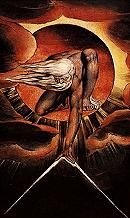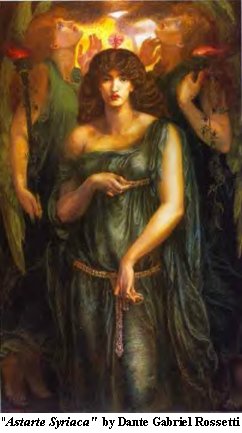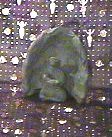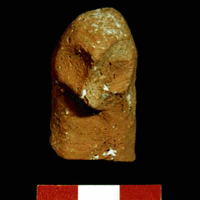Sacred Balance: Sky God, Earth Mother
Questions Exercises Song of Creation YHVH’s Choice, a poem |
Many of the world’s mythological traditions, including our own Indo-European, Semitic and Indo-Persian heritage, speak of a Sky God and an Earth Mother. To this day mainstream Christians and Jews use the term “Mother Nature.” As for a sky god, many don’t realize they are worshiping an ancient Hebrew Sky God called Yahweh / Jehovah.
Here is Eugene Peterson’s translation of the last part of Psalm 68
|
|
The archetypal symbolism behind this pair of divine parents makes perfect sense. The Sky “covers” the Earth as if mating, their union brings about all of creation. Mother Earth is round and fat like a bursting womb and also like a woman’s body, gives “birth” to new lifeforms. She nurtures and feeds and then finally provides the tomb, which illustrates the feminine power of absorption. The masculine power of projection is seen in its symbols of Sky and Sun. Masculine gods are way “up high” in “heaven.” You can’t reach out and touch them like you can the mothering earth. This out-of-reachness brings to mind intellectuality and reason which stand in contrast to Earth and her supposedly emotional nature. This emotion and irrationality sometimes attributed to the Earth Goddess stems perhaps from her connection to us humans, and the fickleness of the human heart. Not to mention her weather, earthquakes, volcanoes, etc. which give her a fickle reputation for sure.
Lots of “heavenly fathers” are sky gods: Zeus, Yahweh, Tiwaz and the Polynesian Rangi, to name a few.
THE SKY FATHER, from a Celtic Religion website
More or less, the Skyfather is the god we are used to refer to as “the head of the pantheon”. This god is probably derived from a common IE god named *Dieus-pater, translated as “Skyfather” – and is quite easily detectable in Greek Zeus Pater, Iuppiters byname Dispater and the the Vedic Dyauspita. In the Celtic World this function is most probably fulfilled by the Ollathair (Great father), the Dagda, whereby the Ollathair seems to be a reminiscent of the *Dieus-pater, although its best cognate is found in the Germanic Odin “Alfodr”.
The function of this god is that he is, usually, the progenitor of all other gods together with the Earth Mother.
Depending on the religion this god is also the head of the pantheon, or at least his father or grandfather and often also the god of thunder and lightning. It seems that this deity is the Dagda in the Irish mythology, while Gaulish mythology he seems to have been called Taranis (“the Thunderer, a cognate term to the Germanic Thorr from the IE root *tn-ro-s). — From: http://www.unet.univie.ac.at/~a8700035/celtreli.html
The Mystic’s Wheel of the Year Calendar has the following entry: August 21 eve to August 23 eve: Feast of Father Sky–honoring God as Obatala (Yoruba/Santeria), Inkosi Yezulu (Zulu), Ouranos (Old Greek), Svarog (Old Slavic), Taranis (Old Celtic), Thunor/Thor (Old Anglo-Teutonic), Haokah (Lakota), Wakea (Hawaiian), Ilyapa (Inca), Dyaus (Hindu), An (Old Sumerian) & El (Old Canaanite-Hebrew).
The earth mother entry is: Sep 20 eve to Sep 22 eve: Feast of Mother Earth–honoring Goddess as Odudua (Yoruba/Santeria), Gaia (Old Greek), Mati-Syra-Zemlya (Old Slavic), Danu/Don (Old Celtic), Hertha/Nerthus (Old Anglo-Teutonic), Maka (Lakota), Pachamama (Inca), Prithivi (Hindu), Ki (Old Sumerian) & Terah (Old Canaanite-Hebrew).
Another entry: Jan 1 to Jan 4: Tewa/Pueblo Tribes’ Turtle Dance – celebrating life and the first creation, when Sky Father embraced Earth Mother and all life was conceived.
A Different Look at the Lord’s Prayer
So if Earth represents our Mother and the Sky represents our heavenly father we might should take a different look at the Lord’s Prayer.
A Prayer to the Supernal Parents
from
the Ecclesia Gnostica
All-powerful Lord, Our Father;
All-wise Lady, Our Mother;
Supernal parents of all that was, and is, and is to come;
Sustain us, your children this day.
Give us the wisdom to see your path,
And the strength to prevail in the darkest hour.
We thank you for the joys we have,
And for your grace bestowed on us
This day and every day.
May we thrive and grow in knowledge, wisdom and understanding.
Now and forevermore. Amen.
How the Goddess was violently removed from Judeo-Christianity:
History shows that goddess worship and the feminine consort of Yahweh/Jehovah were brutally stamped out about 200 years BEFORE Jesus’ time. That bratty king Josiah did it. Chapters 22 and 23 of the book of 2 Kings describe Josiah’s destructive behavior, how the young king slaughtered all the priests and priestesses of Asherah, tore down their temples and shrines (which he admits were built by other Jewish kings, especially by the great King Solomon) and forbade any mention of any deities but Yahweh.
If you’re curious about what this goddess worship was like, start reading at 2 Kings chapter 22 and continue on…. Chapter 23 is good, too, describing how Josiah (age 18 at the time) made it against the law to consult any “ghosts and spirits” and did away with all the nice “household gods and idols” revered by the people. By reading what Josiah destroyed we get a good picture of what goddess worship by early Bible peoples was like. Too bad he got so high on his horse. If we had inherited Solomon’s entire version of the Jewish religion, we’d have our goddess and our sacred balance. In 1 Kings 11: 1 – 10 is the story of how Solomon’s wives “turned” him to the worship of several goddesses whose names are listed. Solomon was known for his wisdom, yet we are told to believe that he was so “wrong” about God.
How the Hebrew Mother Goddess was Worshiped
in Bible times
Asherah was the goddess of fertility and was often represented simply by a wooden pole inscribed with her name and planted upright in the ground (Judges 6:24, 1 Kings 14:22; 18:18; 2 Chronicles 15:16). Think of the May pole worshiped by ancient Europeans in their fertility rituals.
Sacrificial vessels (grails? cauldrons?) were used in Asherah rites. She was supposedly worshiped alongside Baal (2 Kings 23:4). The jealous Yahwists called her sacred tree or pole “an abominable image” and a “graven image” (2 Kings 21:7).
Manasseh, King of Judah, had set up a beautiful statue of Asherah in the Temple. People flocked to it; especially women who just as today tended to come to church more often than men. This enraged the Yahwist contingent of the priesthood who plotted to rid Israel of Asherah worship and to keep women from the Temple proper altogether. They succeeded during King Josiah’s reign.
The beautiful statue set up by King Manasseh was destroyed by his grandson Josiah (2 Kings 23:6), who had been manipulated by the Temple’s misogynist priests. Josiah was only eight years old when he became king and thus easily molded into the vengeful Yahwist desired by the high priest of the time. (2 Kings 22:1, 22:10-20).
One of my favorite twists to this story is when the high priest Hilkiah and his minions go down into the city to consult Huldah, a prophetess! (2 Kings 22:14). She is supposedly the one who gives Josiah the idea that he has to destroy all traces of Asherah worship. The priests go back to the young king and tell Josiah the famous prophetess’ words and warnings.
Can’t help but wonder that they would consult a woman, and that her words carried such authority. Had she been a priestess of Asherah before? Was that why they used her to convince Josiah? Or perhaps she simply possessed a reputation as an accurate prophetess with Yahwist leanings. And did they really consult her that night in Jerusalem (2 Kings 22:14) or just say they did? Whatever the case, her so-called prophecy changed world history by causing all vestiges of feminine worship to be brutally stripped from Judaism, thus dooming Christianity — Judaism’s child — to be a lopsided male-only faith.
To a certain extent, the third desert religion, Islam, is also a child of Judaism. We notice that all three desert religions are void of the feminine. They are harsh as the desert sun, merciless as a lightning bolt. The desert religions reveal the side of a vengeful Sky God who has turned violent over the loss of his female partner. God is tired of mankind mistreating and even ignoring his Wife.
Some of Asherah’s priest/esshood, called “the four hundred prophets of Asherah who eat at Jezebel’s table” had also made an appearance earlier when Elijah challenged Baal on Mount Carmel (1 Kings 18:19).
Top
She was worshiped in the high places.
Statues of Asherah stood on hilltops and “high places” considered holy ground because of their connection between Earth and Sky (1 Kings 14:23, 2 Kings 17:29). The Yahweh temple “of the Lord” was also built on a high place, a hill called the Temple Mount which was originally called Mount Moriah. Today the Muslim Al-Aqsa mosque stands on the temple mount, but perhaps not on the exact spot of the Hebrew temple. The common people also worshiped Asherah from their rooftops, a “high place” easily accessible to families. Popular rituals to the Mother-Goddess included the whole family, even the children who would gather the fuel for the sacrificial fire. The fathers would light and tend to this rooftop fire while the mothers, aunts and older daughters kneaded special dough into goddess cakes. (Jeremiah 7:18) The cakes were marked with symbols of Asherah or made “in the shape of the Queen of Heaven,” as Jeremiah 44:19 says. They also made cakes honoring her spouse, Yahweh or El Elyon, and clay/stone figures have been found showing the two arm and arm with inscription, “Yahweh and his Asherah.” They poured out wine offerings to her and drank some of it while eating the cakes. There it is again: bread and wine used as symbols of flesh and blood; it was a common religious practice in the ancient world (Greece, Egypt) to actually become one with your chosen deity for a short time. You were “taking in” his or her essence. This time the wine is the blood of the earth and the bread is her flesh. Yet she is called the Queen of Heaven, or Heaven’s Queen (Heaven is her spouse, she is his Queen). The people loved her so much that when they were exiled in Egypt they cried out to the prophet: “At least when we worshiped the Queen of Heaven we were prosperous! When you made us abandon her and turn only to her husband Jehovah, he destroyed our nation. From now on we view her as the good old Queen!” (Jeremiah 44:16-19 Note that some Bibles say, “when we sacrificed to the Queen of Heaven,” and others say, “when we burned incense to the Queen of Heaven.” The incense burning and pouring wine to her is considered more accurate. There is no evidence the ancient Israelites ever made animal sacrifices to her as they did to Yahweh. Just cakes, wine, vows, nature shrines and incense were used to honor her.)
| She was worshiped right in the Temple. There were three temples built one after the other on the Temple Mount in Jerusalem. The original one was built by Solomon and destroyed by Babylon. Then came the re-built second temple after the kidnapped Israelites returned to Jerusalem. It was torn down and a new magnificent one, called Herod’s Temple, was built by Herod during the childhood days of Mary and Joseph. In the time of Solomon, builder of the first Temple, Asherah’s priestesses lived right in the temple. Asherah worship and the priestesses of Asherah were there from the beginning of Temple construction. Along with other devotees these so-called “cult prostitutes” a group of both men and women, would decorate the statues with flowers and woven hangings (2 Kings 23:7). Some have compared the carved Asherah “poles” (also called pillars) to the totem poles of Native Americans; others notice the poles’ similarity to the pre-Christian European Maypole, an obvious fertility symbol. Solomon and his sons and grandsons carried out this tradition and were later written up very badly for it in the Old Testament. We must bear in mind that the victors are the ones who write the history books. After Josiah ruthlessly stamped out all things feminine it was his scribes and priests who wrote the law and the history of it. Perhaps they wrote all of 1st and 2nd Kings, painting the rosy picture of bloody King Josiah, calling him “reformer” and God’s avenger. In 1 Kings we see a prophecy, “a child shall be born…Josiah by name who shall slaughter the priests of the high places…” (1 Kings 13:2). |
|
It seems like someone is writing a nice chronicle to please King Josiah. Indeed, one of the footnotes in my study Bible says of Josiah’s scribe and priests, “2 Kings 22:3 Shaphan the scribe: head of a prominent family in the reign of Josiah, secretary to the king, bearer and reader of the new-found book of the law (2 Kings 22 : 3 – 13; 2 Chronicles 34:14 – 20). Shaphan and his sons favored the reform of King Josiah and supported the prophet Jeremiah; Jer 26 : 24.” Jeremiah, as you may recall is another rabid Yahwist, hated by the people for his gloom and doom prophecies. So we have this powerful family close to the King, currying his favor, living in luxury and doing everything they can to stay that way.
Now what about this “new-found” book of the law? Supposedly the priest Hilkiah and scribe Shaphan found it while remodeling the altar area of the Temple. In 2 Chronicles 34:14 we read that this was no ordinary book of the law, no misplaced extra scroll. The verse gives us the astounding news that “in the house of the lord, Hilkiah the priest found the book of the law of the Lord given through Moses.” They had lost the Law of Moses?! It had been unknown to them all this time? The people didn’t know how to behave, how to worship and were erroneously worshiping a God-Goddess Divine Pair? Solomon, known as the wisest man on earth, the great-great-grandfather of Josiah had somehow “lost” this book of the law? Suddenly these power-hungry officials miraculously find it and take it to a young king whom they have personally educated and put on the throne. (2 Chron. 3:25). Josiah reads the “new book of the law” of Moses and immediately rips his clothes in fear of death for offending Yahweh. He’s afraid because the book paints a clear picture of a lop-sided masculine one-god only worship, complete with a vengeful god ready to kill any King who opposes him. This “reform” is all happening around the eighth century BC and it makes one wonder if these scribes and priests didn’t then write and re-write most of the Old Testament. Even Genesis is now said to have parts grafted into it, to be composed of the writings of two authors. (For an awesomely interesting book on this topic which postulates that one of these authors was a woman, see
The
Book of J, by Harold Bloom, Hebrew expert). History is written by the victors and the reformers. Experts speculate that the entire Old Testament is colored by this Yahwist doctrine.
Lots of facts and findings relating to Yahweh having a wife and the purist Yahwists stamping her out, are explained in the following article with an unusual title (you will not be questioned on this article, so fear not. Read it and enjoy. Warning: it’s long.):
Is
there a connection between Judaism and Taoism?
Top
Earlier Israelites had a whole family of gods, just as their Middle Eastern neighbors did. They most certainly revered “Yahweh and his Asherah,” together, as an inscription reads on a large decorated pottery jar found in an Israeli dig. The picture on the jar shows Yahweh and Asherah standing arm in arm as equals. Thousands of little Asherah figurines have also been found in various digs, many with their arms broken where the other half of the figurine -Yahweh- should be. These little household statues were broken during the reform period, Yahweh literally being severed from his Spouse and all the Asherah halves thrown in the rubbish heap. Thousands of these removed Asherahs have been found in ancient trash piles. I bet he was angry indeed at this outrage, suddenly being forced into the role of single-father and bachelor. (See Ancient Israelite Religion, by Susan Niditch, 1997 Oxford Univ Press and The Hebrew Goddess, by Raphael Patai).
It is important to note that we are dealing with the Hebrew Bible here. Christians call it the Old Testament, but the Jews have been true caretakers of this ancient scripture, even as they are the true authors of it. The Jewish people have pored over these scriptures again and again every day, every year, for the past 3000 years. The Talmud is an exhaustively
huge, centuries-old commentary on every single verse, and every single nuance of meaning. Fortunately the Christian Old Testament matches almost perfectly with the Hebrew Bible. There is one famous “alteration” — or word switch. Some time in the Middle Ages, the word witch was inserted for the Hebrew word “poisoner”. But it seems no changes or edits were made to the Hebrew Bible (Old Testament) by the early Christian Church. They may have messed with the New Testament, chopping, cutting and pasting, destroying and suppressing during the 300-year period after Christ, but they left the Old Testament alone, knowing that many copies of the Hebrew Bible were out there to prove wrong any prevarications. But if these creators of the New Testament canon took liberties, would it not be likely that the original compilers of the Old Testament, eight centuries before Christ, also “played god” with the scriptures? There was perhaps only one copy of the Hebrew Scriptures back in 700 BC and it was in the hands of the Temple priests. The writings were “still coming in” and Solomon’s books were still a bunch of scrolls on a shelf. David’s Psalms were probably in the same form. There was no Bible, as we know it, not even half of one. Writing scripture to back up their Yahwist fundamentalism would have been no problem for the religious elite. The High Priest had sole control over what few scrolls existed and many of the kings couldn’t read. The whole thing would have been easy…as easy as bursting into peoples’ homes and ripping every single Asherah figurine from them in the name of “idolatry.”
I read that a woman rabbi has concluded from her studies that Queen Jezebel was not the wanton villainess the ancient Yahwists labelled her. She was more likely a heroine who tried to save her people. This modernday woman rabbi, whose name frustratingly escapes me(!), has written a novel based on a sympathetic portrayal of Jezebel’s life. She draws on scripture, Talmud and tradition to back up her conclusions. It is becoming evident to at least a few rabbis that the Hebrew Bible is lopsided and underwent a serious editing of all things feminine.
And Now Back to our Sky God and Earth Mother.
Abba, as Yeshua called God-the-Father, means “Dad” or “Papa” as opposed to the more formal word, Father. The Mother God would be called, Eema. Abba and Eema are two words still used today by modern Jews to say “daddy” and “mommy.” If you take away the beginning vowel sound of each of those words you are left with: Ba (or Pa) and Ma, familiar sounds for referring to ones parents in all Indo-European languages, including ours.
This brings us back to the Sky God and Earth Mother pair. Someone once told me I was a wiccan because “that’s a wiccan belief!” I’ve never practiced wicca, and at the time hadn’t read any wiccan books, so I was surprised to be called one. I checked into it, and yes indeed, modern wicca has done its homework. Some of the big names in that movement have studied ancient mythology and archeology and come to the same conclusions about the worship patterns of our ancestors. A few wiccans are Goddess-only oriented, making in my opinion the same mistake, but in reverse, as the Yahwist priests and King Josiah made millennia ago.
Theologian John Nash said in a
speech delivered in 2004, “Indeed, the very essence of the Shekinah is an expression of the immanence of God, the Glory of God in the natural world. Her role, in relationship to her bridegroom, finds an echo in many traditions in which the feminine aspect of God is identified with the earth, and the male aspect with the sky. For example, the Essenes spoke of the Heavenly Father and the Earthly Mother. Hindus identify the Brahman as the unknowable Godhead, and mother Maya with physical existence.”
Many of the new pagans (“neo-pagans”) recognize the divine pair, though the most revere many more gods than only two. Think of all the pantheons of Greek, Roman, Celtic, Asatru, African, Hindu deities. A fun exercise is to look at all world religions and mythologies and find the original divine pair of Sky and Earth. In the Greek we have Gaia and Uranus “Father Sky.” In Northern Europe there is Tyr/Tiwaz and Zisa/Isis. The early northern Europeans had contact with Isis worship that had spread over much of the ancient world and they called her Zisa, earth-mother partner of the sky god Zio or Tyr. The thunder god Thor of the Teutonic tribes (Taranos to the Celts) was a derivative of the Sky God Tyr / Tiwaz who gave some of his powers to his sons and grandsons. TiwazDay has become Tuesday, and ThorsDay is Thursday. Our ancestor’s worshiped a whole variety of deities, but the Earth and Sky were the earliest and most prominent. As cultures change, they make way for stern war gods and delightful sex goddesses, but at the root of all creation myths we seem to find that cosmic creative pair, Heavenly Father and Mother Nature-Earth.
O our Mother the Earth, O our Father the Sky,
Your children are we, and with tired backs
We bring you the gifts you love.
Then weave for us a garment of brightness;
May the warp be the white light of morning,
May the weft be the red light of evening,
May the fringes be the falling rain,
May the border be the standing rainbow.
Thus weave for us a garment of brightness,
That we may walk fittingly where the birds sing,
That we may walk fittingly where grass is green,
O our Mother the Earth, O our Father the Sky.
— Tewa prayer, “Song of the Sky Loom”
Interestingly in Sumerian and Egyptian mythology there are sky goddesses paired with earth gods. The roles are switched. Egypt has Nuit as Sky Goddess and Geb as earth god. But these two are the children of the “High God” who emerged along with a cosmic egg and a creating eye in the sky—the masculine sun. In Sumeria there is the divine pair of Inanna and Dumuzi/Tammuz. It turns out that Inanna is called the Queen of Heaven, though, not necessarily the Goddess representing Heaven. Heaven is a male, and she is his queen. In like manner Dumuzi, Inanna’s spouse, is called Ruler or King of the Earth. Inanna is the manifestation of Earth and her spouse is Earth’s king. It’s makes a nice balance. That may be what was going on with the Egyptian Nuit and Geb. Originally in the Sumerian creation myth we meet Tiamat, the earth mother paired with the mysterious Apsu, a primordial “space” god who existed “before the heaven was named” the sky. He and Tiamat “mingled their waters” and created the Universe. (From the Enuma Elish, one of the world’s oldest creation myths written in Babylon in the 12th Century BC). Our mystery school teaches (backed up by scholars of various schools of thought) that the Sumerian Apsu, Tiamat, Dumuzi and Inanna relate to the Y H V H respectively. Father, Mother, Dying Son, Redeeming Daughter.
***************
Intriguing Side Note: Mary, the mother of Jesus is called by Roman Catholics “the Queen of Heaven” and “the Universal Queen of Heaven and Earth.” This reverence of Mary has earned the Catholics the scorn of protestant scholars who accuse them of worshiping a pagan “whore” goddess. Just type Queen of Heaven into google’s search engine and a dozen sites will pop up with their accusations. The Catholics and Orthodox are the only Christian denomination whose pagan roots overcame the masculine-only doctrine and demanded a sacred feminine archetype. The Church had to give the people a Lady, so it chose Mother Mary and made her a Queen of Heaven, and the Mother of God, but stopped short of full godhood. (As if they decide who is divine and who isn’t…) Eventually the church declared her eternal virgin and immaculately conceived so she’d be “clean.” They sanitized her. They didn’t want female church-members getting too prideful comparing themselves to her. Yet, those same church authorities compare
themselves to Jesus ad nauseum, even claiming to stand literally “in persona Christi” / in the person of Christ, when they are at the altar saying mass. But that’s another story…
******************
Dumuzi (Tammuz is a later version of his name) is called the Shepherd King and was the consort of Inanna (Ishtar is the later version of her name and root of the Hebrew name Esther, which the popstar Madonna, student of Jewish mysticism, now asks to be called). Tammuz was worshiped by the people of Israel right inside Solomon’s Temple. The women would channel the Sacred Bride (Ishtar/Inanna), actually invite her into themselves to do her weeping for her. They would weep for three days every spring, thus bringing back her beloved, the Dying/Resurrecting Shepherd King. This worship practice is condemned in the Bible (Ezekiel 8:14) and Tammuz’s name and the women weeping are mentioned.
If you go to blueletterbible.org and type in “Tammuz,” several things come up. Hitchcock’s Bible Names Dictionary gives a definition of the name Tammuz: “Tammuz: abstruse; concealed; consumed.” Interested.
Nave’s Topical Bible calls him simply, “a Syrian idol.” But Easton’s Bible Dictionary goes further:
Tammuz, a corruption of Dumuzi, the Accadian sun-god ( the Adonis of the
Greeks), the husband of the goddess Ishtar. In the Chaldean calendar there
was a month set apart in honour of this god, the month of June to July, the
beginning of the summer solstice. At this festival, which lasted six days,
the worshipers, with loud lamentations, bewailed the funeral of the god,
they sat “weeping for Tammuz” ( Eze 8:14).
The name, also borrowed from Chaldea, of one of the months of the Hebrew
calendar [even now in modern times].
The entry above says six days, but the weeping was actually only three days. Either way, Tammuz dies and gets resurrected on the third day in the familiar pattern. But that’s another set of archetypes from the “dying god” group of myths which we’ll cover in future lessons. In this lesson we’ve been looking at the first generation of gods by considering the world’s Sky and Earth parents. They are part of the Creation myths. Dying and resurrecting gods come later, as do all the many cleansing-by-water Flood myths, not to mention at least five Apocalypse cleansing-by-fire myths produced by various peoples on this planet from the Norse to the Persians to Native Americans. Contrary to popular Christian belief, the Bible is not the only source for these familiar stories and powerful messages. “Through stories we learn all we need to know…” says Sheherezade in the opera that bears her name, and the modern movie Arabian Nights.
Many earthlings say we need new myths, new religious gems to point the way for us. Some modern fables such as Star Wars and Matrix are modern myths; full of concepts we can learn from. Other mythologists say we need to write our own personal mythos, that each person’s life is a series of archetypes and sacred journeys. Joseph Campbell, famous mythologist, says we are all on the Hero’s or Heroine’s journey. We are making a Quest, searching for the Ultimate, whatever that might be—fulfillment, oneness with the Divine or simply bliss (Campbell’s term). We draw to ourselves the other players in our personal myth. How are you making the journey? Who are your other players? I hope you are faring well…!
| Song of Creation by Linda Sillitoe
| YHVH’s Choice by Lady Deborah, Mystery School Initiate
|
BIBLE TRANSLATIONS, plus HOUSEHOLD IDOLS aka “TERAPHIM”
Top
A word about Bible translations. I really like the New American
Bible for Catholics, Official Catholic Bible. Not only does it have the apocrypha in the middle, but it’s
commentary and cross-references are wonderful. For example, right in the margins it explains 2 Kings 23:7 “Cult prostitutes of both sexes” existed in the Temple of the Lord, the women being the weavers of the garments for Asherah.
The commentary/notes also describe some of those household gods and idols, explaining that they were called Teraphim and were very popular. The Bible commentary note for Genesis 31:19 where Rachel steals her father’s little idols says, “figurines used in divination.” Rachel hides her father’s Teraphim in a most unusual way–inside a cushion, which she sits upon and exclaims she cannot get up from because it’s her “period” time of the month. If you’ve seen the movie Gladiator, the main character, a macho but religious general-turned-gladiator carries around a whole set of little household god/dess figurines, ending up with only two. His are carved out of wood, I believe. Teraphim are mentioned in the story of Rachel and Laban, but also in Hosea 3:4 “For the people of Israel shall remain many days without king or prince, Without sacrifice or sacred pillar, without ephod or teraphim.” The commentary states: “Household idols: images regarded as the tutelary deities of the household; cf Genesis 31:19; Jdgs 17:5; 18:14,17- 18”
The
New American
Bible is online here, commentary and all!
* * * * * * * * * * * * * * * * * * * *
STUDY QUESTIONS & EXERCISES
Top
Please answer the following questions, by pasting the questions into an email and typing your answers under each question. Then send your answers to
The Mystery School. with “Diakon 1 Answers from ________ (your magikal name)” in the subject line
l. Which King of Israel viciously stamped out Hebrew Goddess worship?
2. In what sort of places in the Levant (Holy Land) did ancient goddess worship take place?
3. Have you ever heard or read that Yahweh was a Sky God? Does the idea make sense to you? Explain why or why not.
4. What is/are your favorite Bible translation(s)? [By translations we mean the many different English translations of the Bible such as the King James Version (KJV), the New International Version (NIV), the New American Bible for Catholics (NAB), the Revised Standard Version (RSV).]
Please complete the following
exercises, sending your results and comments, impressions, thoughts, etc. to the
Mystery School. with “Diakon 1 Exercises from ________ (your magikal name)” in the subject line.
Exercise 1: Choose a personal mantram, such as Yeshua-Miriamne, Asherah-Yahveh, or Yud-Heh-Vahv-Heh (which captures all four members of the Godhead). Some modern Essene Reconstructionists use Yesu-Mari, Gnostics and some Christian Hindus say, Om-Yesu-Kristu, but that last one doesn’t have a feminine element in. You could add one, which in Sanskrit/Hindustani would be Mira or Mirai if you want to be linguistically consistent. I think it’s important for the mantram to be gender balanced. Sometimes I will just say, God the Mother, God the Father. Or Father-Mother God, Father-Mother God, over and over. Earth and Sky, Earth and Sky works great, too in certain moods or situations. I recently watched the television miniseries “Attila,” based on the life of Attila the Hun. The young wise-woman of these fierce horse-people prayed out loud to the “earth and sky” asking them to hear her and aid her magiks. One Initiate, Elda Mildredsdaughter who is now a staff member and Abbess of our Order of Mary Magdala, suggested the following back when she first tried this exercise:
I find that I use two mantra when I enter into meditation:
|
What’s interesting is that the 3rd member of the YHVH is indeed known for his “blood,” and water and blood are associated with each other in this mantram. When the spear was thrust into Yeshua’s heart, blood and water came out and the eucharist was later based on that (wine and water). Another nice fit for this mantram is the fourth member of YHVH (daughter) is said to be the Holy Spirit. Fire my Spirit is the fourth line of the mantram above. Sky and Earth are obviously the first two members of our Father-Mother-Son-Daughter Quaternity.
Old English Mantram
Initiate Lady Arianna, a scholar of Old English, wrote in to say: “I chose to do the same as above except to say the second phrase in Old English” as follows:
Lyft min lyft [Sky my breath]
Earomengrund min bodig [earth my body]
Brim min blod [water my blood]
Un brond min ferd [and fire my spirit]
[Note: the word min is pronounced “meen” or if you can manage, “mheen”. Lyft is pronounced “loft” or “luft”]
Exercise 2: Go up to a high place, a rooftop or a hill and see if you can feel or at least sense the link between heaven and earth.
Exercise 3: (Extra Credit)
Make yourself some Teraphim out of clay or as paper dolls. (Reread the paragraph about Teraphim at the end of the lesson above). Teraphim are figures used in divination and worship from the Biblical days of Rachel.
|
Exercise 4: (Extra Credit) If you’re really brave, not worried about being called a “heretic Jezebel” try making some Asherah cakes. Add raisins if you can! “Even as the LORD loves the people of Israel, though they turn to other gods and are fond of raisin cakes.”
Hosea 3:1 The commentary for that verse says: “Raisin cakes: offerings to the fertility goddess Ashera, the female counterpart of Baal; cf Jer 7:18; 44:19.” The name Baal means simply Lord or husband. In modern Hebrew, the word for husband is baal, and is used everyday by millions of Israeli wives to refer to their hubbies.
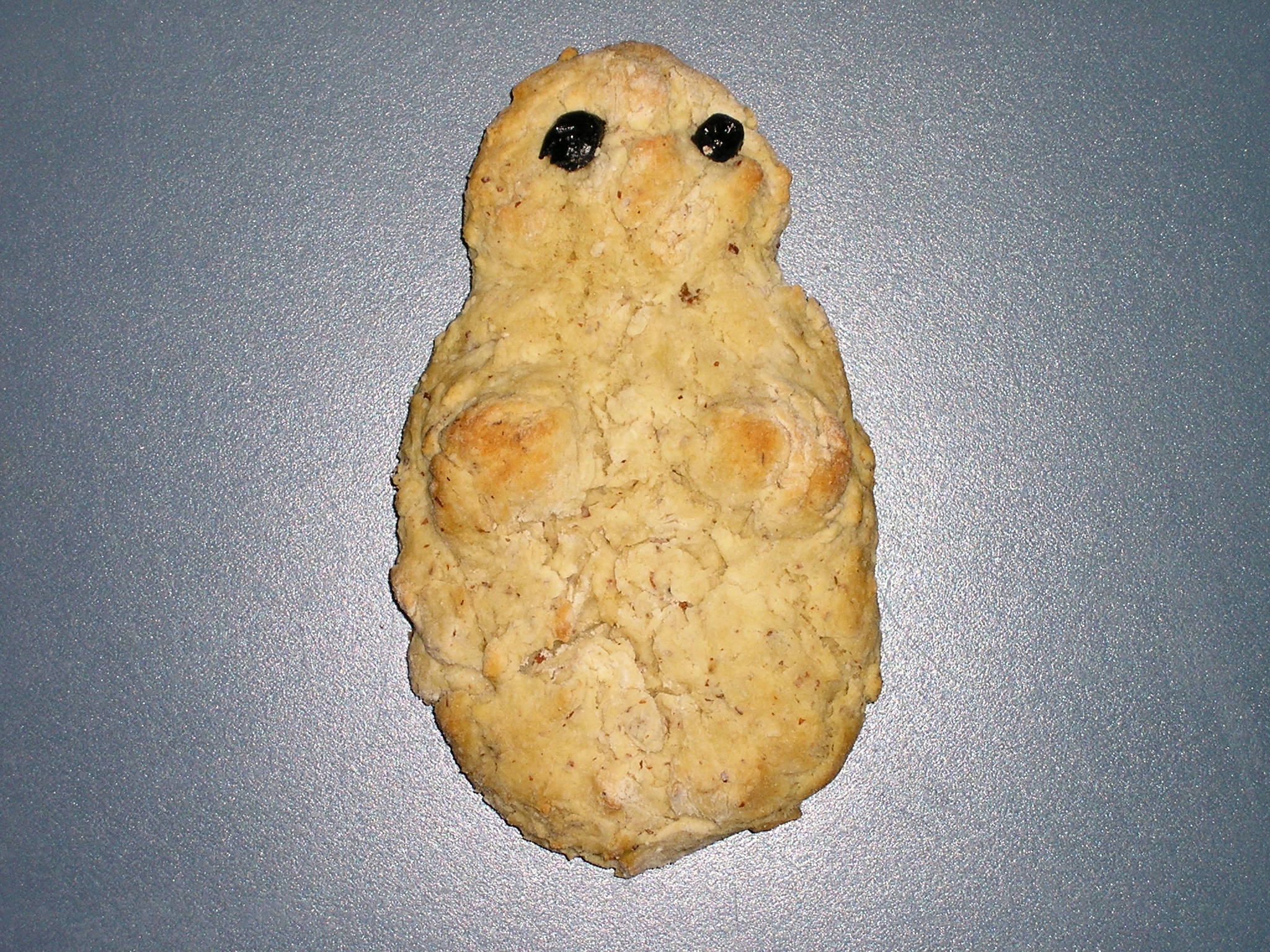
There is also this raisin cake verse: “You will moan for the raisin cakes of Kir-hareseth As those who are utterly stricken.” Isaiah 16:7 And this one which hints at what the cakes might have looked like, “When we baked cakes shaped like the Queen of Heaven, offered incense to her, and poured out wine offerings to her, our husbands approved.” Jeremiah 44:19
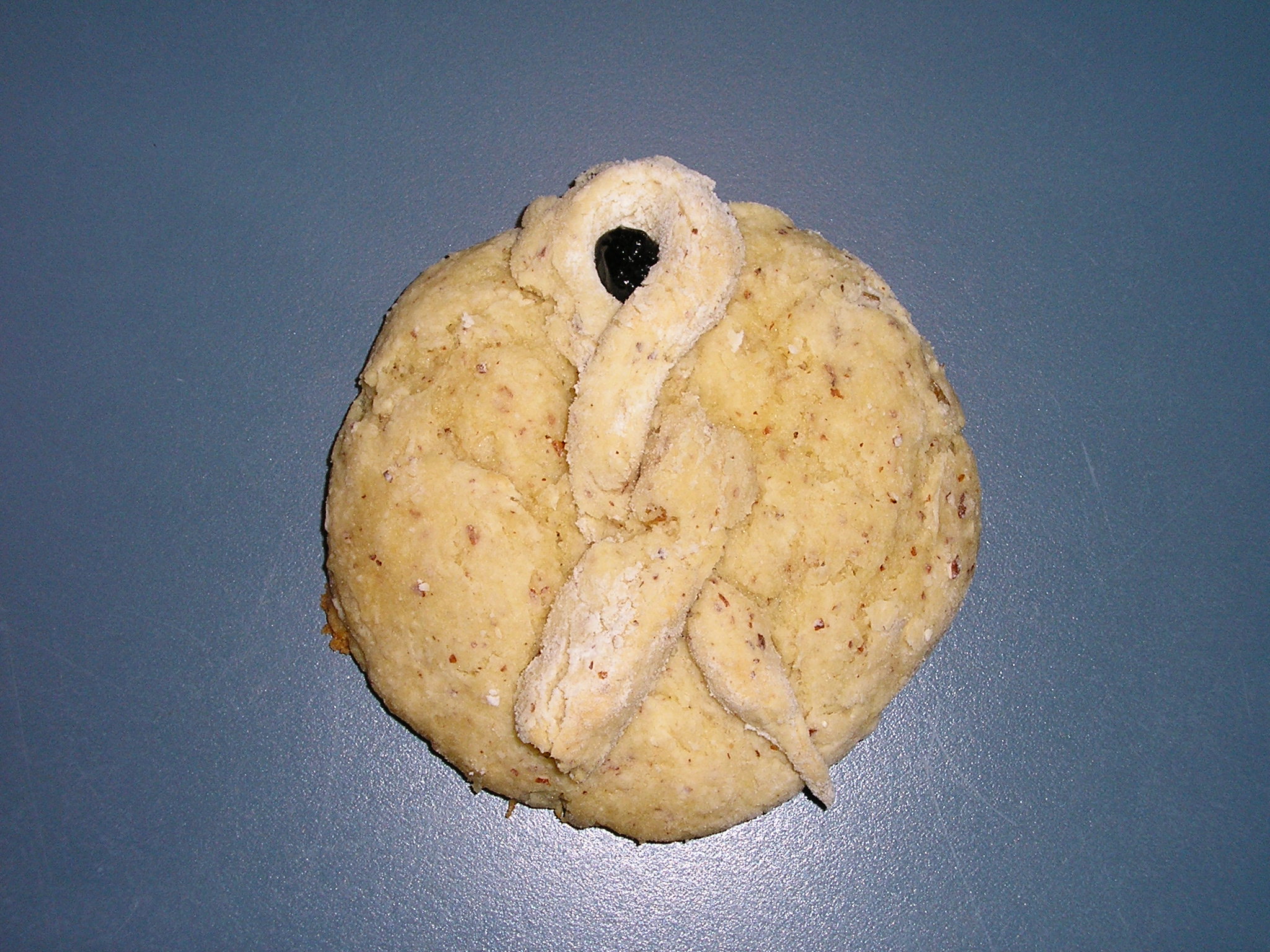
Let your imagination guide you when you make your Asherah Cakes, perhaps mark each one with her symbol, the staff or pole. Many scholars say the caduceus wand with its snakes twined around it (the symbol for modern medicine, used by doctors all over) is clearly an Asherah symbol. She was also the Goddess of healing, as mother goddesses often are. When the Israelites were dying of a mysterious illness in the desert, Moses and Aaron were told to erect that pole with snakes and have them look upon it to be saved. It should be noted that Aaron’s staff was associated with snakes in Pharaoh’s court. The snake was a symbol of immortality, resurrection, and knowledge, the latter being quite obvious in the story of the serpent in the garden. People in the ancient world really truly thought snakes were immortal and could create new bodies for themselves because the people saw snakes crawl out of an old skin and go off looking like they had a brand new body. Anyway, in one of the classic Bible-magik scenes, Aaron casts his staff down and it turns into a slithering serpent. This transformation shows that the staff is in essence a living organism, a magikal god-powered snake that hides itself in the form of a staff, giving power to its wielder. (Exodus 7 : 8-12)
Here’s an excerpt from SacredSource.com, a website selling statues of all the beautiful goddesses of the Holy Land, including Asherah: “Asherah The original bread of life. Hebrew and Canaanite women molded loaves of this figure which were blessed and ritually eaten, the precursor of the communion wafer. Her idols were found under every green tree and were carved from living trees or erected as poles or pillars beside roadside altars. Crude clay images of her as tree of life later evolved into the more refined Syrian Artemis. Ancient sexual rites (dismissed to this day by male scholars as cult prostitution) associated with worship of Asherah insured that matrilineal descent patterns, with their partnership rather than dominator values, would continue. Hebrew priestly iconoclasts finally uprooted Asherah, supplanting matrifocal culture with patriarchy. Our Judeo-Christian inheritance of this law of the Levites, passed on by the Roman Empire, is one source of present-day sex inequality. ”
——————————————————————————-
I will close with something you might get a chuckle out of. (Okay, so it’s a bit silly, but I actually say this rhyme with my small daughter:)
Pat-a-Cake, Pat-a-Cake, Asherah’s Man
Make me a cake as fast as you can
Pat it and Roll it and mark it with a Snake
Put it in the oven — it’s an Asherah’s Cake
| Other intriguing tidbits about Asherah: God Has a Wife! our online slideshow and click on all the slides about Asherah
For those of you with a scholarly bent, you may wish to track down this article which used to appear right here in this spot. Can’t find it online after that link became old. The Baal (and the Asherah?) in Seventh-Century Judah, by Tzimon Yliaster |
|
|
| More artifact photos & explanations, including Yahweh & his Asherah |

